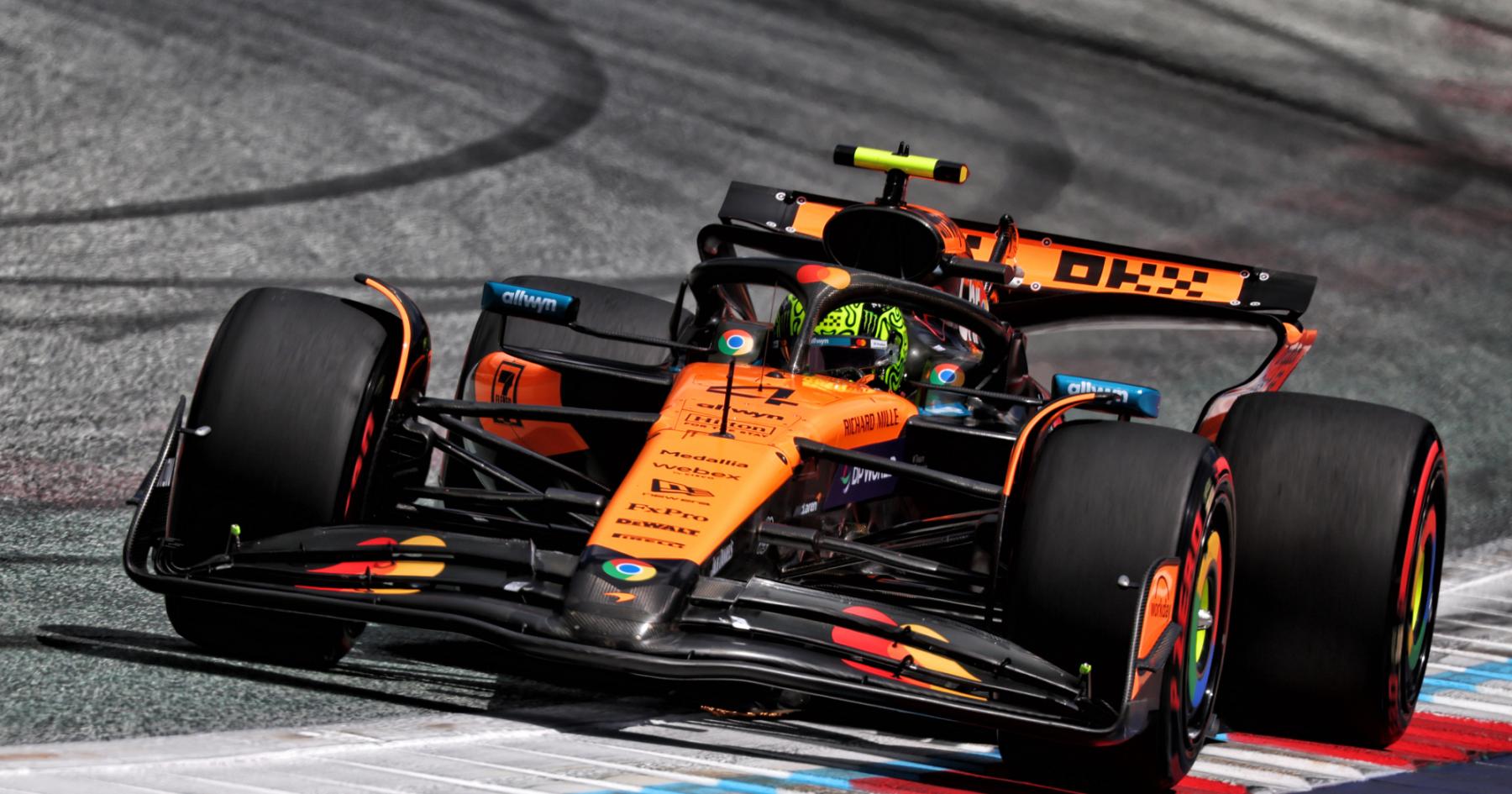29/06/2025 11:27
F1 tyre supplier Pirelli has outlined that a two-stop strategy is
the likely route to victory in the Austrian Grand Prix - but that
is not set in stone. Following a stunning qualifying lap, Lando
Norris will start the 70-lap race at the Red Bull Ring from pole
position, but it is not his McLaren team-mate and championship
leader Oscar Piastri alongside him on the front row of the grid.
Instead, it is Ferrari's Charles Leclerc, with Piastri having to
settle for third. The Australian is joined on the second row by
Lewis Hamilton in his Ferrari. It is the seven-time F1 champion's
highest grid position this year since his switch to the Scuderia.
For the race, which is set to start in a temperature of 30 degrees
Celsius and a track temperature pushing 50, meaning high tyre wear,
it appears as if the two-stop plan will be the dominant strategy.
Pirelli has indicated that for all four of its favoured scenarios,
starting on the medium compound is the way to go. From that point
on, however, the teams have numerous options. The most likely route
is a switch to the hard rubber before a final stint on the medium;
alternatively, drivers could be handed another set of mediums and
then finish with the hard. There is even the possibility of going
long on the hards in the middle stint before a late burst on the
softs. Haas is the only team to have saved two new sets of hards,
which it may favour, as suggested by Oliver Bearman after
qualifying on Saturday. There is the option for a one-stop, which
would need the mediums to last through to a likely maximum of 32
laps before moving on to the hard tyre. Pirelli head of F1 Mario
Isola has even gone so far as to suggest a three-stop strategy may
be deployed. Assessing the options, Isola said: "The quickest
strategy on paper is still with a two-stop, which is medium, hard,
medium again, or medium, medium, hard, as they want. "We have only
one team with two sets of hard, which is Haas, and then we have
Aston Martin, Racing Bulls and Alpine, who decided to use a medium
[on Saturday in practice], and so they have only one set of hard
and one set of medium. "For then, you cannot exclude that they will
try a one-stop strategy, starting on the medium and moving to the
hard, or the opposite. But a one-stop, looking at our simulations,
is seven seconds slower than a two-stop. "Three-stop is not far.
It's slightly slower and could be an option if the level of
degradation increases quite a lot, but without a safety car, I
don't see it in the planning for the teams."



